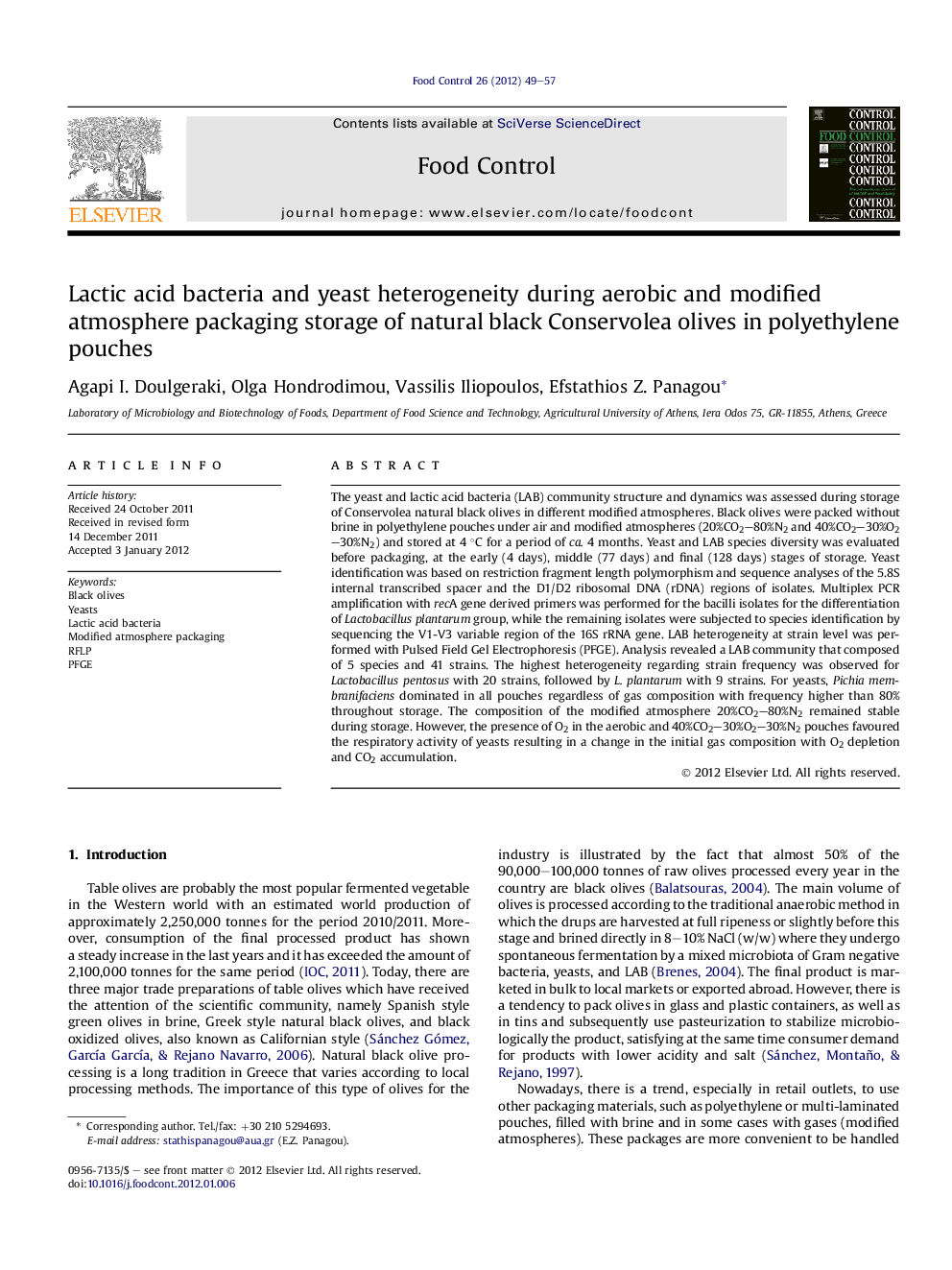| Article ID | Journal | Published Year | Pages | File Type |
|---|---|---|---|---|
| 6393500 | Food Control | 2012 | 9 Pages |
The yeast and lactic acid bacteria (LAB) community structure and dynamics was assessed during storage of Conservolea natural black olives in different modified atmospheres. Black olives were packed without brine in polyethylene pouches under air and modified atmospheres (20%CO2-80%N2 and 40%CO2-30%O2-30%N2) and stored at 4 °C for a period of ca. 4 months. Yeast and LAB species diversity was evaluated before packaging, at the early (4 days), middle (77 days) and final (128 days) stages of storage. Yeast identification was based on restriction fragment length polymorphism and sequence analyses of the 5.8S internal transcribed spacer and the D1/D2 ribosomal DNA (rDNA) regions of isolates. Multiplex PCR amplification with recA gene derived primers was performed for the bacilli isolates for the differentiation of Lactobacillus plantarum group, while the remaining isolates were subjected to species identification by sequencing the V1-V3 variable region of the 16S rRNA gene. LAB heterogeneity at strain level was performed with Pulsed Field Gel Electrophoresis (PFGE). Analysis revealed a LAB community that composed of 5 species and 41 strains. The highest heterogeneity regarding strain frequency was observed for Lactobacillus pentosus with 20 strains, followed by L. plantarum with 9 strains. For yeasts, Pichia membranifaciens dominated in all pouches regardless of gas composition with frequency higher than 80% throughout storage. The composition of the modified atmosphere 20%CO2-80%N2 remained stable during storage. However, the presence of O2 in the aerobic and 40%CO2-30%O2-30%N2 pouches favoured the respiratory activity of yeasts resulting in a change in the initial gas composition with O2 depletion and CO2 accumulation.
⺠Lactic acid bacteria heterogeneity was affected by gas composition in the pouches. ⺠Lactic acid bacteria community consisted of 5 species and 41 strains. ⺠The highest strain frequency was observed for L. pentosus and L. plantarum. ⺠Yeast community was dominated by P. membranifaciens.
